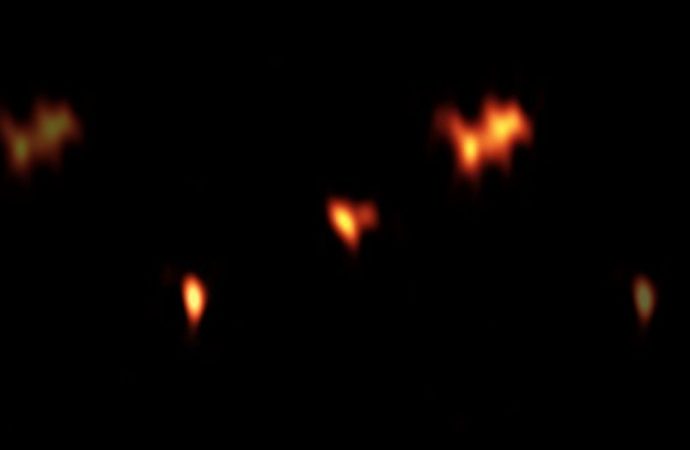You’ll need more than sunglasses to look at this shiny object in the sky.
The brightest object in the universe has been discovered, a quasar from when the universe was just 7 percent of its current age.
The quasar, now known as PSO J352.4034-15.3373 (P352-15 for short), was discovered 13 billion light-years away from Earth by the Very Long Baseline Array (VLBA) radio telescope.
“We are seeing P352-15 as it was when the Universe was less than a billion years old, or only about 7 percent of its current age,” said Chris Carilli, of National Radio Astronomy Observatory (NRAO) in a statement.
“This is near the end of a period when the first stars and galaxies were re-ionizing the neutral hydrogen atoms that pervaded intergalactic space.”
Carilli added: “Further observations may allow us to use this quasar as a background ‘lamp’ to measure the amount of neutral hydrogen remaining at that time.”
Quasars are defined as an extremely luminous active galactic nucleus, powered by a black hole that is a billion times as massive as the Sun, according to Space.com.
The light and radio emissions seen from the quasar are actually caused by the material around the black hole itself, known as an accretion disk. The disk eventually speeds up to a tremendous space, pulling in dust and gas so that it looks like water headed down a drain, according to ScienceAlert.
The researchers findings were published in The Astrophysical Journal on July 9.
Eduardo Banados, of the Carnegie Institution for Science in Pasadena, Calif., noted that there is a “dearth of known strong radio emitters from the universe’s early days,” making this one such an important find.
The quasar eventually split into three distinct parts, the VLBA found — and researchers are trying to figure out why.
They have two theories so far.
The first explanation is that the images the researchers are seeing is the bright core of the quasar itself, “corresponding to the location of the supermassive black hole itself, at one end, and the two other bright spots are parts of a one-sided jet.”
“This quasar may be the most distant object in which we could measure the speed of such a jet,” said Emmanuel Momjian, of the NRAO.
The other explanation is that the middle object is actually the core and the other objects are jets ejected going in opposite directions.
More research is needed to determine which scenario is true, though the first explanation is the most likely.
Despite that, P352-15 offers much for the researchers to learn about the history of the universe, how it was formed and how it is evolving.
“This quasar’s brightness and its great distance make it a unique tool to study the conditions and processes that prevailed in the first galaxies in the Universe,” Carilli said. “We look forward to unraveling more of its mysteries.”
Source: Fox News

































Leave a Comment
You must be logged in to post a comment.